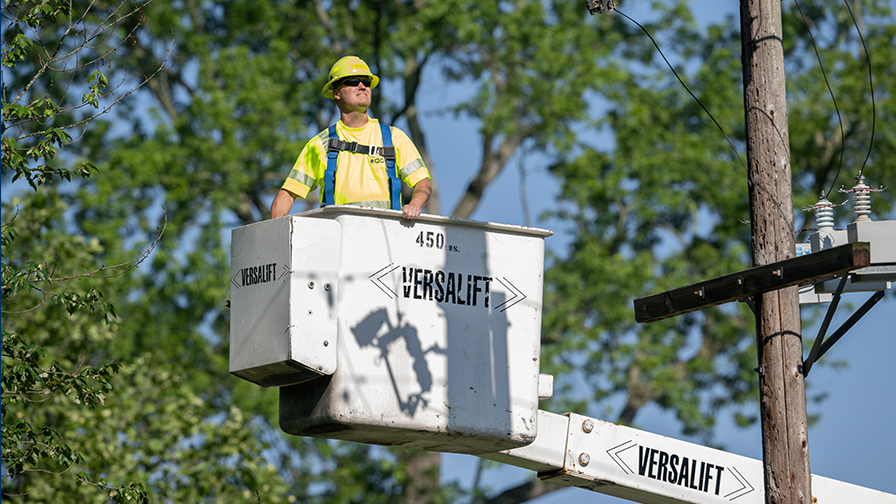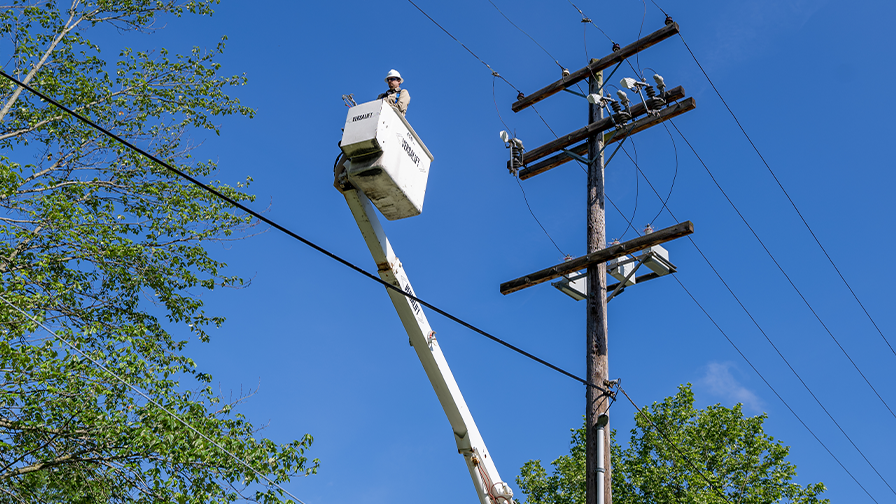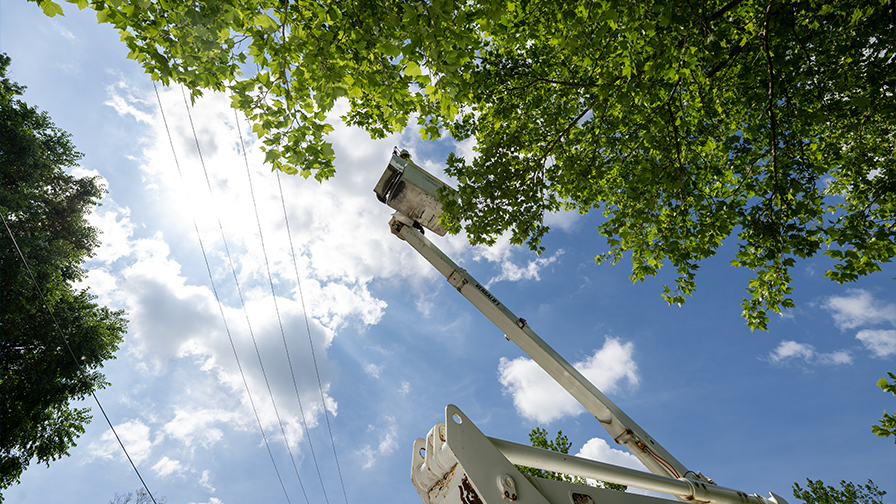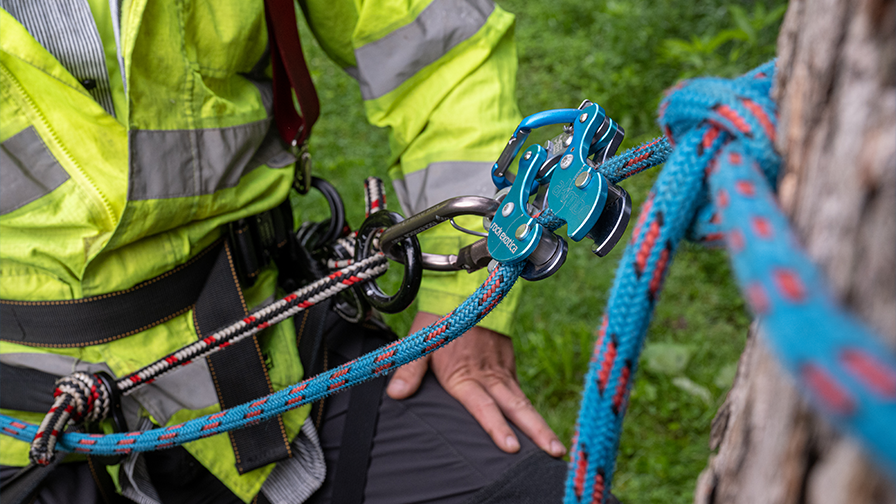Five-Minute Meeting: Electrical Hazard Safety for Arborists
Five-Minute Meeting: Electrical Hazard Safety for Arborists

Five-Minute Meeting: Electrical Hazard Safety for Arborists
There has been an alarming trend of fatalities from electric shock for tree workers that could be prevented through proper training and instruction on electric hazard safety.
According to the Tree Care Industry Association (TCIA), since 2009, 148 tree workers have lost their lives due to electric shock while trimming trees. This is a terrible trend, with 70% of fatalities resulting from indirect contact and 30% because of direct contact with electrical conductors. Only four fatalities from indirect contact involved tree limbs or palm fronds contacting high-voltage (HV) conductors: one from a case of step potential where the ground was energized and the other from a case of touch potential where a work vehicle was energized. Most indirect contact fatalities were because of the use of uninsulated tools near power lines. Identifying the existing hazards for line clearance arborists is the first step to a comprehensive training program.
An electrical hazard exists when any tree worker or a conductive object they may be in contact with must approach closer than 10 feet to any overhead electrical conductor. Direct electrical contact occurs when any part of the worker, their tools, or their equipment contacts HV conductors. Indirect electrical contact occurs when tree limbs, guy wires, conductive tools, aluminum ladders, or other conductive equipment that contacts HV conductors. Both forms of electrical contact are potentially fatal. Situations involving electrical hazards include but are not limited to, pruning or removing trees near energized conductors using either an aerial lift for access to the tree or by climbing nearby trees for pruning and felling from the ground, using conductive pole tools, using conductive ladders, or by using conductive lift devices or materials handling equipment.
Hazard avoidance practices include a thorough hazard training program. Five-minute meetings provide opportunities for important safety information to be relayed to workers, so they remain prepared to handle potential hazards. The employer must ensure that each employee has been trained to recognize and is appropriately qualified to work near any electrical hazard that might be encountered at a work site. This training should include proper instruction on electrical hazards, insulated tool use, and training on rescue operations near conductors — don’t become the second victim. Remember the “three minimums” of training requirements as laid out in the American National Standards Institute (ANSI) Z133, Chapter 4: The employee must know what it energized, the employee must know the voltage of the energized lines, and the employee must know their minimum approach distance (MAD).
According to the ANSI Z133, before work is started on a site, a qualified person must inspect the worksite to determine whether an electrical hazard will be created while climbing, otherwise entering, or performing work in or on a tree. Non-line-clearance personnel must maintain a minimum approach distance of at least 10 feet from energized lines up to 50 kV, with distances increasing at higher voltages, and only line clearance tree trimmers or line clearance tree trimmer trainees must be assigned to work where an electrical hazard exists. Line clearance tree trimmer trainees must work under the direct supervision of line clearance tree trimmers. Branches contacting energized conductors must only be removed by qualified individuals using non-conductive equipment.
When tree work cannot be safely completed with the line energized, the arborist must stop work on that assignment until an Electrical Hazard Abatement Plan is implemented. This plan may include a request for the utility to de-energize, test, and ground the electric supply lines at the worksite.
Learn more about our Electrical Hazard Training Certification, a course class designed for municipal, urban forestry, or other tree care employees whose work requires a 10-foot safety zone around energized wires.
Related Articles

Five-Minute Meeting: Working Around Secondary Wires and Low Voltage Lines Though the American National Standards Institute (ANSI) Z133 allows us to “avoid contact” with secondary lines or those under 750 volts, we need to exercise caution around these lines because they carry lethal voltage. Secondaries have lower voltage than primaries. We can distinguish them by[...]
Read More
Five-Minute Meeting: Working Overhang When conducting pruning operations, even for small branches, the best practice is to remove branches in a “total branch control” manner using ropes or by reducing the size of the branch you are cutting into a much smaller piece. In a weekly kick-off safety meeting, a utility noted a situation that[...]
Read More
Aerial lifts cannot touch energized lines and arborists must be aware of minimum approach distance (MAD). Learn more.
Read More
Wear, tear, and other damage to equipment can present safety hazards in the field. Equipment maintenance can prevent these safety hazards from arising and is essential for continued safe work with that equipment.
Read MoreSUBSCRIBE
Subscribe to our mailing list to receive updates.
Categories
Recent Posts
- How-To: Learning Knot Basics 02th Aug 2018
- How-To: Tying a Stopper knot 07th Aug 2018
- How-To: Selecting the Right Safety Vest 21th Aug 2018
- How-To: Tying a Slip Knot 04th Sep 2018
- How-To: Inspecting Your Snaps 18th Sep 2018
Training the Next Generation
All our classes are built on industry safety practices. Ready to start learning?